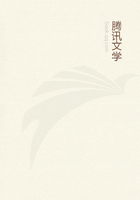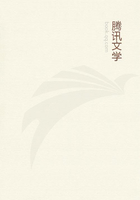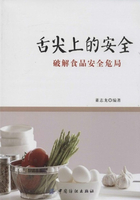Usually globose (occasionally depressed or even subcolumnar), 5 to 6 cm. in diameter (doubtless becoming larger): tubercles 8 to 10 mm. long, woolly in the upper axils: radial spines 4 to 6, rigid, 4 to 6 mm. long, the upper one stouter than the rest and sometimes shorter, reddish-brown and horny, straight or slightly curved, the remainder straight and white with dusky tips; central spine stout and horny, reddish-brown, 7 to 10 mm.long: flowers greenish-white or tinged with red: fruit unknown Type unknown.
Entirely Mexican, reported from Chihuahua to Saint Luis Potosi. Specimens examined: San Luis Potosi (Gregg of 1848; Parry 268;Eschanzier of 1891): Chihuahua (Wislizenus of 1846-47; also Chihuahua specimens cultivated in the Jacoby Garden in 1856 and 1857).
The variations observed in this species do not seem sufficient for the establishment of varieties.The type form seems to have been globose, with 4 radial spines and a stout central one.The depressed forms with 6 radials and a more slender central represent var. spinosior Lem. (M. depressa Scheidw.); and the subcolumnar forms with 6 radials (the upper one of which is somewhat curved) and a stout strongly hooked central represent var biuncinata Lem. (M. bihamata Pfeiff.)Such combinations of characters, however, do not hold, as any one of the plant body forms may display any one of the spine characters referred to.
B.Tubercles terete.
Central spines none: mostly simple globose plants, with very numerous straight whitish setaceous radials.
10.Cactus lasiacanthus (Engelm.) Kuntze, Rev. Gen. Pl. 259(1891).
Mamillaria lasiacanthaEngelm. Syn. Cact. 261 (1856).
Globose or ovate globose, 2 to 2.5 cm. high and 1 to 2 cm. broad: tubercles 4 mm. long, about 2 mm. in diameter, with naked axils: spines 40 to 60, in many series, very unequal, 2 to 4 mm, long, white and pilose, the upper exterior usually longer than the rest, the innermost usually much shorter: flowers 12 mm. long, whitish or pinkish (petals with red median band): fruit 1 to 2 cm. long: seeds about 1 mm. long, blackish and conspicuously pitted. (Ill. Cact. Mex. Bound. t. 3).Type, the specimens of Wright in Herb. Mo. Bot. Gard.
From western Texas ("west of time Pecos, on low limestone hills, among herbage") to Arizona and Chihuahua.Fl. April, May.
Specimens examined: Texas (Wright 121, also of 1852; Parry of 1852): Arizona (Miller of 1881): Chihuahua (Pringle 213, 250,258): also specimens cultivated in St. Louis in 1852 and 1855.
11.Cactus lasiacanthus denudatus (Engelm.). Mamillaria lasiacantha denudataEngelm. Cact. Mex. Bound. 5 (1859). Larger, 2.5 to 3.5 cm. in diameter, with longer tubercles (5 to 6 mm.),and more numerous (50 to 80) longer (3 to 5 mum.) spines which are naked or nearly so. (Ill. Cact. Mex. Bound. t. 4)Type, Wright specimen in Herb. Mo. Bot. Gard.
From western Texas (with the species) to Coahuila.
Specimens examined: Texas (Wright of 1852): Coahuila (Palmer of 1880).
In the Syn. Cact. Dr. Engelmann merges this variety with the species, and has been followed in this by subsequent writers, but the characters seem so (distinctive that its varietal rank has been restored.
12.Cactus micromeris (Engelm.) Kuntze, Rev. Gen. Pl. 260 (1891).
Mamillaria micromerisEngelm. Syn. Cact. 260 (1856).
With depressed top and very rarely branching, 1 to 3.5 cm. in diameter: tubercles very small (about 1 mm. long) and wart-like, crowded, sheddingthe spines with age and giving the base of the plant a tuberculated appearance: spines from white to ashy-gray, 1 to 3 mm. long; in young plants and on lower tubercles of adult plants about 20, equal and radiant; on flower-bearing tubercles 30 to 40, stellate-porrect in every direction, the 6 to 8 upper ones two to four times longer than the rest (4 to 8 mm.), clavate toward the apex and acute (the clavate top at length deciduous), intermixed with loose wool of about the same length and forming a small tuft on the top of the plant which includes and partly hides flowers and fruit: flowers whitish to light pink, almost central, very small (6 mm. in diameter), much reduced (3 to 5 sepals, 5 petals, 10 to 15 stamens, 3 stigmas): fruit 8 to 12 mm. long: seeds 1.5 mm. long, black and shining. (Ill. Cact. Mex. Bound. t. 1 and 2. figs. 1-4)Type, the specimens of Wright in Herb. Mo. Bot. Gard.
On naked mountain tops and sides, extreme southwestern Texas (Val Verde County to El Paso) and southward into Coahuila and Chihuahua.
Specimens examined: Texas (Wright 227 of 1849, also of 1852; Nealley of 1892): Coahuila (Bigelow of 1853): Chihuahua (Pringle 212): also growing in Mo. Bot. Gard. 1893.
The plants densely covered above with delicate ashy-gray spines and with naked tuberculate base are readily recognized.It still remains an open question whether the flowers are developed from the axils of tubercles of the same season or the last ones of the preceding season.Dr. Engelmann inclined to the latter view, as all the other characters of the plant associate it with the "lateral-flowered" species; and in the absence of definite observation we have retained it there.If the nearly central flowers indicate that they are produced from growth of the same season the species would seem to be allied to Coryphantha, in which group its small flowers and small tubercles would be anomalous.
13.Cactus micromeris greggii (Engelm.).
Mamillaria micromeris greggiiEngelm. Syn. Cact. 261 (1856).
Larger (2.5 to 5 cm. in diameter) and becoming oblong, with larger globose-ovate tubercles (2 to 2.5 mm. long), fewer rigid spines all radiant (interior 5 to 7 shorter and stouter, 1 to 2 mm. long; the outer 15 to 18, 3 to 4 mm. long), and fruit 1.5 to 2 mm. long. (Ill. Cact. Mex. Bound. t. 2. figs.
5-8)Type, Gregg 508 in Herb. Mo. Bot. Gard.
Mountain ridges near Saltillo, Coahuila.Said by Budd to occur within the southern borders of Pecos County, Tex.
Specimens examined: Coahuila (Gregg 508; Palmer of 1880).















